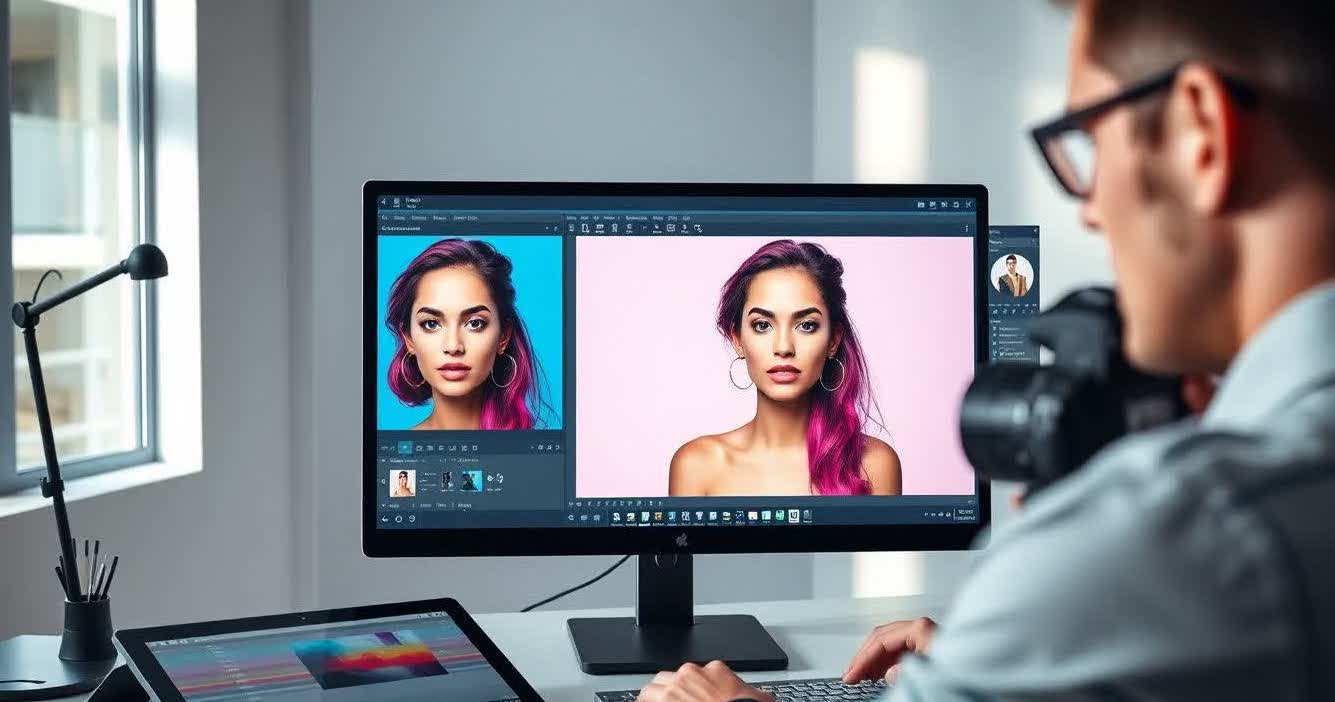May 29, 2025

Photo editing is the art and science of enhancing, refining, or transforming an image to improve its visual impact, clarity, or emotional resonance. It involves adjusting various elements of a photo—like brightness, contrast, sharpness, color balance, or composition—to better reflect your intended message or mood.
Whether you're polishing a professional portrait, enhancing a product shot for e-commerce, or adding artistic flair to your travel photography, editing allows you to take an image beyond its raw form and elevate it to its fullest visual potential.
In today’s image-centric digital world, unedited photos rarely stand out. Platforms like Instagram, online stores, marketing campaigns, and portfolios all rely heavily on high-quality, polished visuals to grab attention and convey professionalism.
But photo editing isn’t just for experts anymore. Thanks to the rise of AI-powered apps and intuitive editing platforms, virtually anyone—from a casual smartphone user to a seasoned photographer—can produce stunning images in just minutes.
✅ Enhances storytelling
✅ Ensures visual consistency
✅ Adds emotional and artistic depth
✅ Increases engagement and credibility in digital spaces
📖 Learn more: Best Photo Editing Apps in 2025 – Edit Like a Pro
Here’s what modern photo editing empowers you to do:
1. Adjust Lighting and Exposure : Poor lighting can make even the most beautiful subject look flat or unclear. Editing tools allow you to:
These adjustments bring clarity and life to your shots, ensuring the lighting matches your creative intent.
🔍 Related: Photography Artificial Lighting – A Beginner’s Guide

2. Remove Unwanted Objects : Whether it’s an accidental photobomber, a power line in the sky, or trash in the background, modern photo editing tools—especially those powered by AI—make it easy to clean up distractions.
With just a few brush strokes, you can:
📌 See: How to Remove Unwanted Objects from Photos

3. Color Correction and Grading : Color correction helps balance tones to reflect natural or realistic hues, while color grading adds a stylistic look—like warm sunset tones or cool cinematic blues.
You can:
🧪 Read: Color Correction vs Color Grading – Explained

4. Apply Creative Effects : Beyond technical corrections, editing allows you to infuse creativity into your images. You can experiment with:
🎨 Try This: How to Create Artistic Double Exposure Photos & What is Split Lighting in Portrait Photography

5. Restore Old Photos : Have old family photos that are scratched, faded, or torn? Modern photo restoration apps use AI and manual tools to:
💾 Learn How: Best Photo Restoration Software in 2025

Photo editing is a universal tool used across industries and skill levels:
💸 Interested in monetizing your photos? : Best Photo Selling Websites 2025, How to Sell Your Photos Online for Passive Income
🧾 Planning to Charge for Editing Services? : If you’re looking to build a business offering photo editing or enhancement services, you’ll want to price your work competitively and professionally.
💰 Learn how to price your services : How to Price Photography Services – 2025 Guide
Here are some of the most popular photo editing apps in 2025:
📲 Compare more tools: Best Photo Editing Apps in 2025
Photo editing is no longer a luxury—it’s a standard in modern photography. It bridges the gap between what the camera captures and what the artist envisions. Whether it’s fixing exposure, evoking emotion with color, or making a creative statement, editing turns snapshots into meaningful, memorable images.
Thanks to modern apps and intelligent software, you don’t need to be a pro to get pro-level results. From enhancing selfies to restoring history, the tools are in your hands—on your desktop, in your pocket, or on the cloud.
Stay up to date with the newest tips, gear reviews, and step-by-step guides to elevate your photography journey from home and beyond.